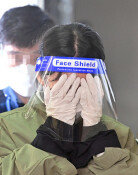Pres. Park sees Dresden as symbol of reunification `bonanza`
Pres. Park sees Dresden as symbol of reunification `bonanza`
Posted March. 29, 2014 02:53,
Why did South Korean President Park Geun-hye choose the former East German city of Dresden to deliver her address that would crystallize her vision for unification with North Korea?
In the light of a symbol of reunification, Dresden falls behind Berlin, which was divided by a wall. However, Dresden is an ideal place symbolizing post-reunification visions. For President Park, Dresden shows visions for North Korea after reunification. The German city with 1,000 years of history was an industrial center of Germany until the Second World War broke out. As Soviet troops were stationed in the city, however, some 23,000 companies fled to West Germany. Allied bombings in February 1945 leveled 85 percent of the entire city. However, miracles burgeoned on the ruined city after the German reunification. With many Western German companies flocking to Dresden, its economy grew by around 10 percent every year. Now called Germany`s Silicon Valley, Dresden is a symbol of the reunification "bonanza," as President Park put it.
Moreover, Dresden was the center of a popular uprising that triggered East Germany`s collapse. After the fall of the Berlin Wall in 1989, then Western German Chancellor Helmut Kohl flew to Dresden to deliver a speech on reunification a moment when the flames of the German reunification flared up. President Park believes that the reunification of the Korean Peninsula will be possible only when North Korean residents truly want it. Perhaps, she wanted to show to North Koreans the city that pioneered its own fate and became a symbol of the "German dream."
Meanwhile, Dresden Mayor Helma Orosz said she would make a "Korean Street" in the city to commemorate the South Korean president`s visit.







